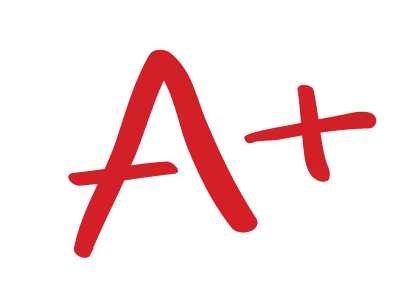• Creating A Healthy City
•
Overview
Develop a 4 page healthy-city initiative suitable for implementation by your city.
By successfully completing this assessment, you will demonstrate your proficiency in the following course competencies and assessment criteria:
SHOW MORE
• Toggle Drawer
Context
Government agencies play many roles that impact environmental health. The Assessment 6 Context document provides a brief overview of some of those roles. You may wish to review this document for key concepts and ideas on this topic.
• Toggle Drawer
Questions to Consider
To deepen your understanding, you are encouraged to consider the questions below and discuss them with a fellow learner, a work associate, an interested friend, or a member of the business community.
For the following questions about disaster preparation, refer to the “Make a Plan” and “Test Your Readiness Quotient” resources linked in the Resources under the Required Resources heading.
• What kinds of disasters, both natural and man-made, are most likely to occur in your area?
• How would you be notified of an emergency situation in your community?
• How many of the Readiness Quotient Test questions would you be able to answer as “Yes”? What steps could you take to achieve 10 out of 10 “Yes” answers?
• What is your disaster plan?
For the following questions about your personal impact on environmental health, consider the course as a whole.
• What will you take away from this course?
• Have you made any changes in your lifestyle?
• Will you make any changes based on what you have learned?
• Toggle Drawer
Resources
Required Resources
The following resources are required to complete the assessment.
Capella Resources
Click the links provided to view the following resources:
• APA Paper Template.
Suggested Resources
The following optional resources are provided to support you in completing the assessment or to provide a helpful context. For additional resources, refer to the Research Resources and Supplemental Resources in the left navigation menu of your courseroom.
Capella Resources
Click the links provided to view the following resources:
• Assessment 6 Context.
SHOW LESS
Capella Multimedia
Click the links provided below to view the following multimedia pieces:
• Why Recycle? | Transcript.
Library Resources
The following e-books or articles from the Capella University Library are linked directly in this course:
• Friis, R. H. (2012). The Praeger handbook of environmental health. Santa Barbara, CA: Praeger.
o Volume 1: Foundations of the Field.
o Chapter 21, “Eco-Friendly Transportation and the Built Environment.”
o Volume 4: Current Issues and Emerging Debates.
WRITE THIS ESSAY FOR ME
Tell us about your assignment and we will find the best writer for your paper.
Get Help Now!o Chapter 21, “Public Health Emergency Preparedness and Community Resilience.”
o Chapter 22, “Biodefense and Bioterrorism.”
o Chapter 25, “Environmental Sustainability, Ecosystem Services and Human Well-Being.”
• Philip, R. B. (2014). Environmental issues for the twenty-first century and their impact on human health. Sharjah, UAE: Bentham Science Publishers.
o Chapter 7, “What Can Be Done: Are There Remedies?”
• Middlemiss, L. (2011, March). The effects of community-based action for sustainability on participants’ lifestyles. Local Environment, 16(3), 265–280.
• Poland, B., & Dooris, M. (2010, September). A green and healthy future: The settings approach to building health, equity and sustainability. Critical Public Health, 20(3), 281–298.
• Schiller, K. (2011, May). Disaster response. Information Today, 28(5), 1–40.
• Bourque, L. B., Mileti, D. S., Kano, M., & Wood, M. M. (2012, May). Who prepares for terrorism? Environment and Behavior, 44(3), 374–409.
• Chertoff, M. (2008). Confronting biological threats to the homeland. Joint Force Quarterly, 51, 8–12.
• Nozick, M. (1998, May). Healthy cities, healthy communities. Canadian Dimension, 32(3), 20.
• Rydin, Y. (2012). Healthy cities and planning. The Town Planning Review, 83(4), XIII–XVIII.
Course Library Guide
A Capella University library guide has been created specifically for your use in this course. You are encouraged to refer to the resources in the BIO-FP2000 – Environmental Health Library Guide to help direct your research.
Internet Resources
Access the following resources by clicking the links provided. Please note that URLs change frequently. Permissions for the following links have been either granted or deemed appropriate for educational use at the time of course publication.
• Transition US. (2013). Transition 101. Retrieved from http://transitionus.org/transition-101
• Transition US. (2013). Organizing your initiative: Getting started. Retrieved from http://transitionus.org/knowledge-hub/organizing/getting-started
• The Pachamama Alliance. (2014). Retrieved from http://www.pachamama.org/
• World Health Organization. (2014). Healthy cities. Retrieved from http://www.euro.who.int/en/health-topics/environment-and-health/urban-health/activities/healthy-cities
• Ready.gov. (2014, January 29). Make a plan. Retrieved from http://www.ready.gov/make-a-plan
o This reading is presented as part of the Questions to Consider for this assessment. Note: You are encouraged but not required to complete the Questions to Consider.
• The United States Army. (2008, September 11). Test your readiness quotient. Retrieved from http://www.army.mil/article/12318/Test_your_Readiness_Quotient/
o This reading is a transcript that describes an Internet quiz that is no longer available online. However, the quiz questions that are presented in the reading can be used as a guideline for a self-analysis of your own readiness quotient.
o This reading is presented as part of the Questions to Consider for this assessment. Note: You are encouraged but not required to complete the Questions to Consider.
Bookstore Resources
The resources listed below are relevant to the topics and assessments in this course and are not required. Unless noted otherwise, these materials are available for purchase from the Capella University Bookstore. When searching the bookstore, be sure to look for the Course ID with the specific –FP (FlexPath) course designation.
• Hilgenkamp, K. (2006). Environmental health: Ecological perspectives. Sudbury, MA: Jones and Bartlett.
o Chapter 18, “Disaster Preparedness.” This chapter introduces both natural disaster and terrorism issues, the government agencies response to disasters, and the role of an environmental health professional during a disaster situation.
o Chapter 19, “Environmental and Public Health Challenges.” This chapter summarizes global and domestic environmental health issues, and the importance of public health laws and domestic and international bodies with environmental health mandates.
• Assessment Instructions
The purpose of this assessment is to consider aspects of what makes a healthy city and to integrate your research to provide strategies for individuals and communities to improve environmental health.
To begin, suppose you are working with your city planner to develop a healthy city initiative for your city (or a city near you). You are tasked with developing a report that will be presented to your city council.
Craft a 4 page written document that could be presented to your city council, addressing the following points:
• What is environmental health?
• Why is creating a healthy city important to environmental health?
• What could your city do to become a healthy city?
o What would be the obstacles to change, and why are they obstacles?
o What financial issues would have to be considered?
o How would these changes benefit you, your family, and your community?
• What could your city do to become better prepared for disasters, both natural and human-made?
• Why should environmental health be considered an individual concern? Why should it be considered a global concern?
• What could you or your family do—in your home, your neighborhood, and your workplace—to reduce your personal impact on the environmental health of your city?
Additional Requirements
Your document should follow a logical structure and be evidence based. Use the APA Paper Template as a resource for formatting and citations.
• Written Communication: Written communication should be free of errors that detract from the overall message.
• Length: The report should be 4 pages in content length. Include a separate title page and a separate references page.
• Font and Font Size: Times New Roman, 12-point, double-spaced. Use Microsoft Word.
• APA Formatting: Resources and in-text citations should be formatted according to APA (6th edition) style and formatting.
• Number of Resources: You are required to cite a minimum of 2 scholarly resources. You may conduct independent research for resources and references to support your report. Provide a reference list and in-text citations for all of your resources, in APA format. You may cite texts and authors from the Resources.
Introducing our Online Essay Writing Services Agency, where you can confidently place orders for a wide range of academic assignments. Our reputable homework writing company specializes in crafting essays, term papers, research papers, capstone projects, movie reviews, presentations, annotated bibliographies, reaction papers, research proposals, discussions, and various other assignments. Rest assured, our content is guaranteed to be 100% original, as every piece is meticulously written from scratch. Say goodbye to concerns about plagiarism and trust us to deliver authentic and high-quality work.



